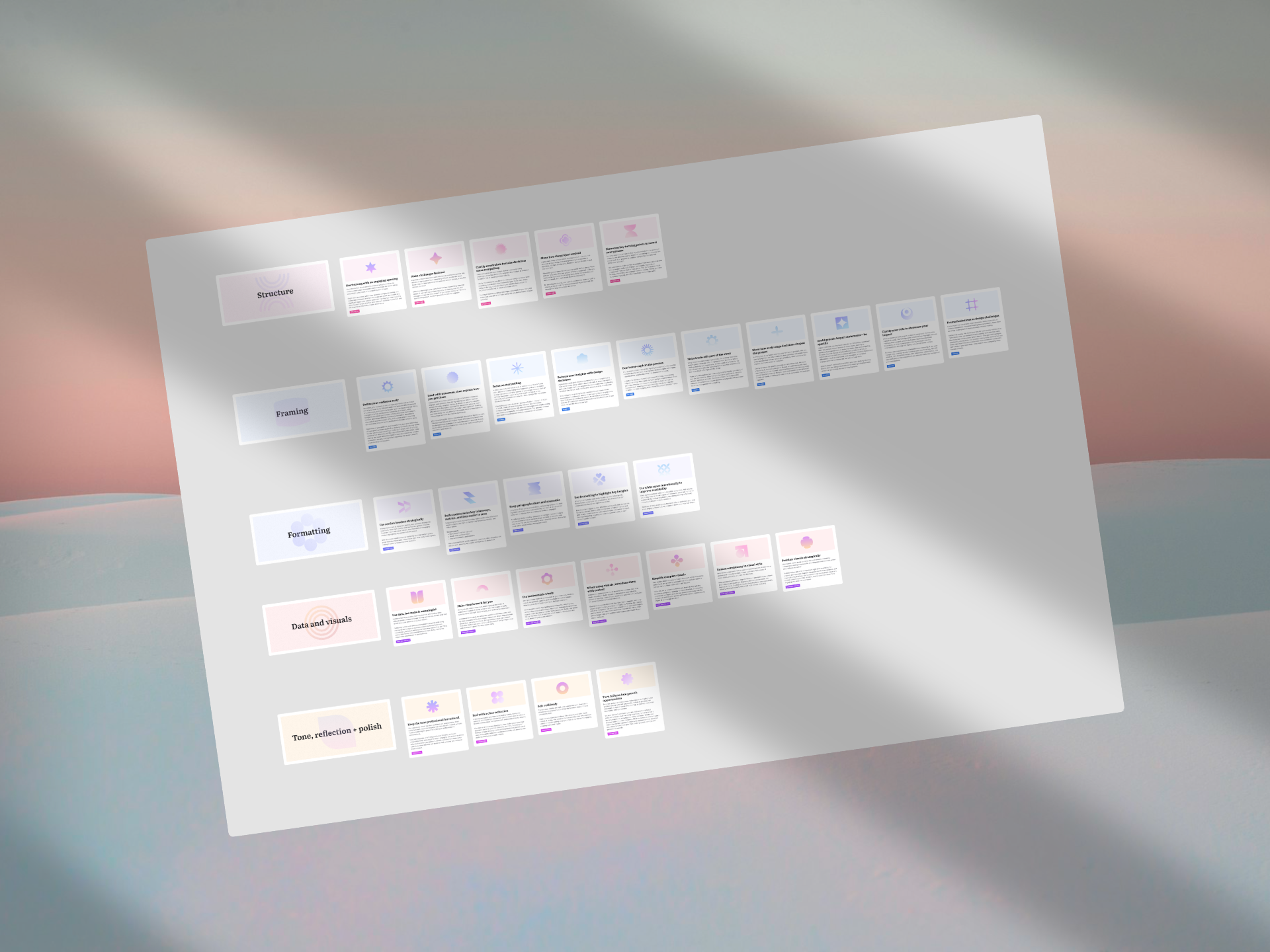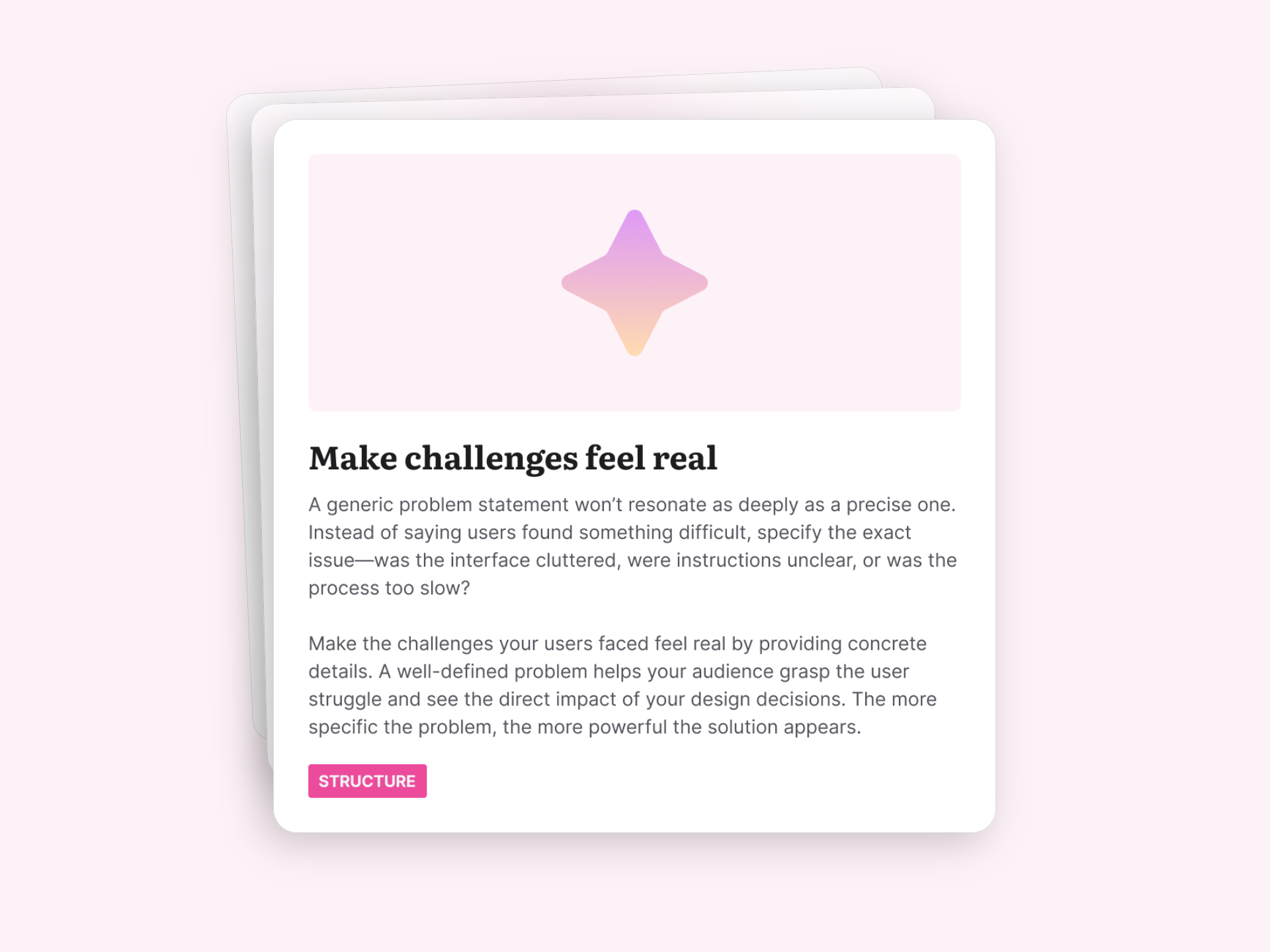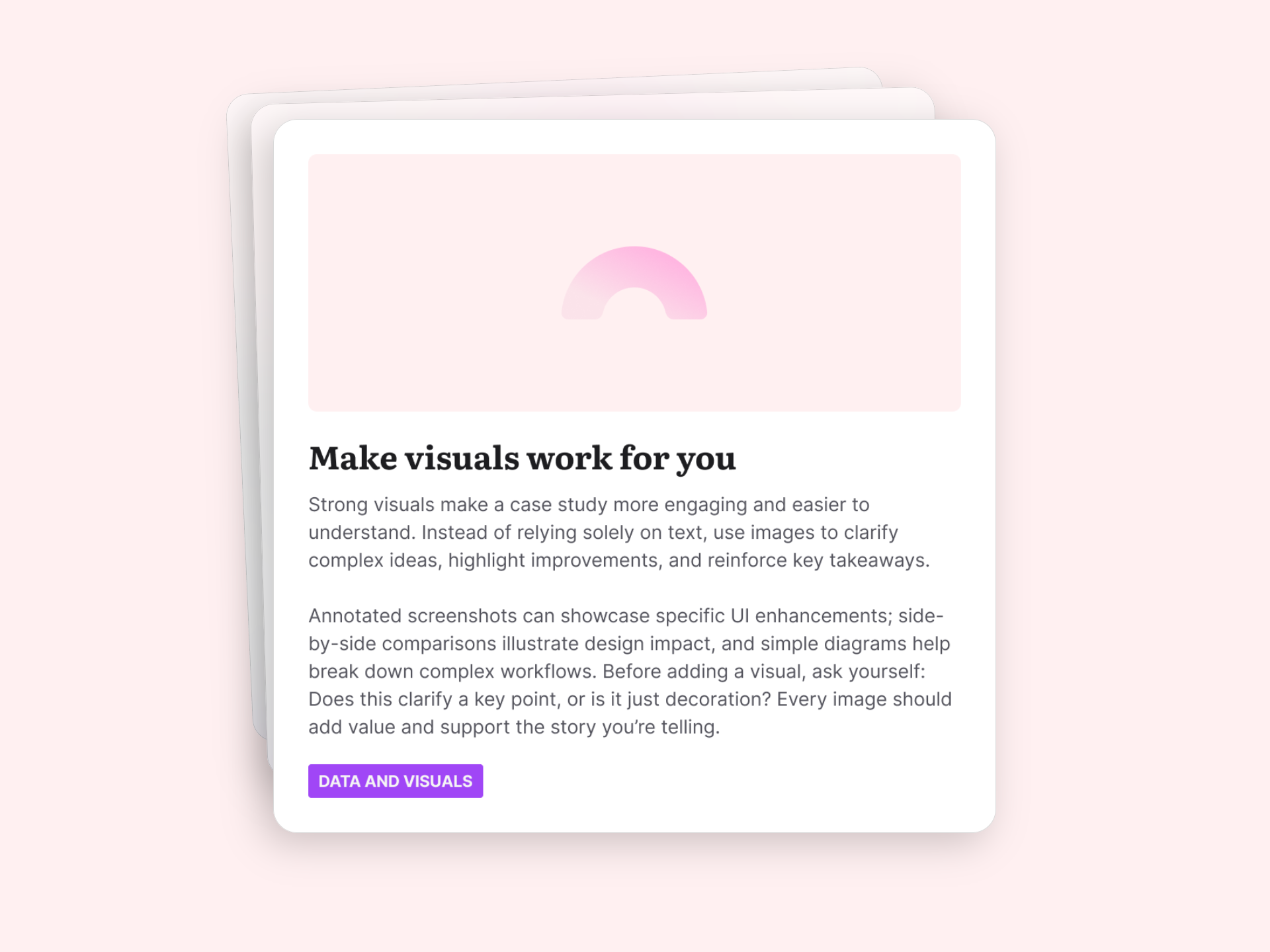A while back, I shared an article called How to write and present UX case studies that get you noticed. It was packed with ideas, but I kept thinking: what are some practical tips that designers can use while designing their case study?
I created a free (for members) Figma file with 31 case study tips, organized into cards that you can keep open as you write. Each one focuses on a specific principle, such as clarifying your role, framing constraints as opportunities, or structuring a story arc that feels relatable and engaging.

The goal: to create tips that you can use in Figma that help you write a case study that’s not just informative, but clear, strategic, and memorable. Explore how to apply the mindset of a designer to writing and developing a case study. Each section below includes a list of the most relevant cards from the Figma file, so you can go deeper or use them as a reference when you need them.

1 / Treat writing like a design challenge
Developing a case study is an exercise in writing, but if you’re a designer, you already have most of the tools you need. The same principles you use to create clear, intuitive interfaces also apply to communicating your work. Think of your case study as a user experience in itself. One where your reader needs to quickly understand what you did, why it mattered, and how you think.
Start by identifying the audience. Are you writing for a hiring manager scanning for signals of leadership and impact? A fellow designer curious about your process? An exec looking for business value? Just like designing for different personas, your writing should adjust based on who’s reading.
Then apply the basics of information architecture: lead with the most important insight, break content into logical sections, and use a clear hierarchy to guide attention. Treat each paragraph like a UI element. Does it serve a purpose? Is it in the right place? Is it helping or adding noise?
Finally, reduce friction. Don’t over-explain every step of the process. Instead, focus on the moments that mattered, trade-offs, turning points, and decisions that shaped the outcome. Include only the research insights that drove change, and keep your content high-level but meaningful. Utilize formatting and white space to enhance scannability and maintain your audience's engagement. A well-written case study tells a story and makes the significance of your work obvious and easy to grasp.
Relevant tips
- Define your audience early
- Use section headers strategically
- Bullet points make key takeaways, metrics, and lists easier to scan
- Use formatting to highlight key insights
- Don’t over-explain the process
- Use white space intentionally

2 / Structure creates meaning
Structure shapes how your work is perceived. A well-structured case study guides your reader through a clear and meaningful journey, helping them understand not just what you did but why it mattered.
A strong narrative structure mirrors good storytelling. Start with the problem, introduce the insight that shifted your thinking, walk through the actions you took, and end with measurable results. This “problem → insight → action → result” arc gives your case study emotional clarity and logical flow.
But structure isn’t only about order—it’s about emphasis. Highlight turning points that changed your direction or sharpened your focus. Surface the trade-offs you navigated along the way. These decision points give your reader insight into how you think and work under pressure.
It also helps to lead with outcomes. Don’t wait until the end to show impact. Share a key result early to capture attention and set expectations. From there, your process becomes the proof behind the result.
And finally, think of your formatting choices as part of the structure. Section headers, bullets, bolded lines, and spacing act like visual signposts. They make it easier to scan and absorb key takeaways, just like good interface design.
Relevant tips
- Make challenges feel real
- Lead with outcomes, then explain how you got there
- Make trade-offs part of the story
- Show how the project evolved
- Focus on storytelling

3 / Help your audience feel what mattered
Facts inform, but feelings make an impression. A great case study doesn’t just report what you did but makes the impact feel real and human. That means grounding your decisions in authentic moments, surfacing user struggles, and showing the thought process behind the work, while also acknowledging the tension inherent in your constraints.
The most compelling design decisions are the ones tied to real user pain points. Don’t just describe what changed; rather, show the friction users faced and explain how your solution addressed that specific issue. Grounding your decisions in context helps the reader feel the weight of the problem and the value of the resolution.
Visuals can reinforce this emotional connection, but only if they’re used with purpose. Add screenshots, diagrams, or comparisons only when they clarify a point, illustrate improvement, or bring a moment to life. Avoid decoration. Every visual should carry meaning and support your narrative.
When talking about constraints, don’t shy away from them. Whether you had limited time, resources, or data, frame those limitations as design challenges. Share how you adapted or prioritized under pressure; this not only adds credibility, but it reveals your problem-solving mindset.
Finally, let people see how the work evolved. Show the loops of feedback, the shifts in direction, and the choices that emerged through iteration. This builds trust with your reader—they’re not just seeing the polished version, they’re seeing how you got there.
Relevant tips
- Balance user insights with design decisions
- Make visuals work for you
- When using visuals, introduce them with context
- Frame limitations as design challenges
- Show how early-stage decisions shaped the project
Writing a case study isn’t just about showing what you did, but rather it’s about shaping how others understand it. When you apply design thinking to how you write, structure, and tell your story, your work becomes easier to grasp and memorable. If you found this helpful, please share it with a friend or teammate!




